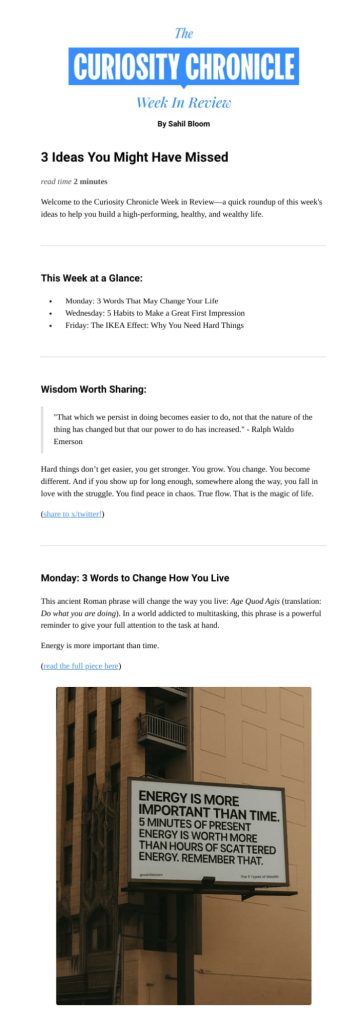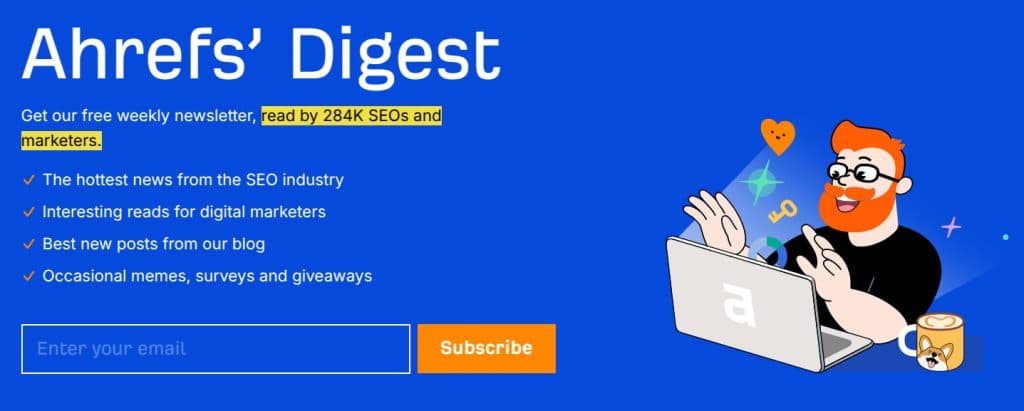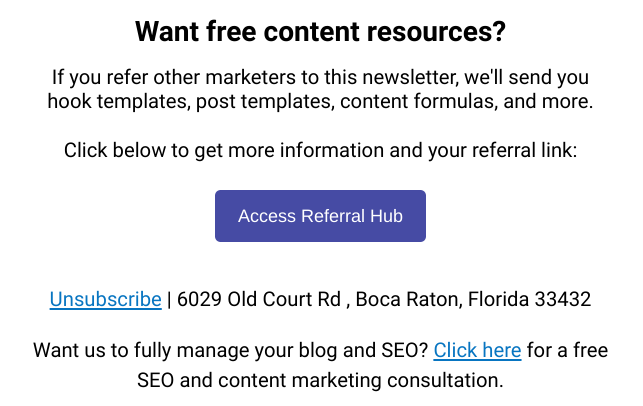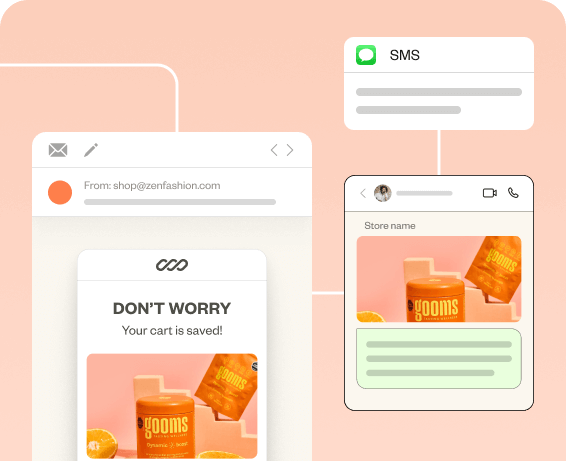There’s a reason your inbox is full of email newsletters you never read. Most are written like instruction manuals. Long, lifeless, and forgettable.
Creating an email newsletter is not just about “writing emails.” It’s about building a content machine that people actually look forward to reading.
What do I even write, or what email newsletter format should I use? How do I make an email newsletter template look good without turning into a designer? And why does it look perfect in Gmail but is a total mess in Outlook?
This blog answers all.
We are going beyond the basics. You’ll learn exactly how to build a high-performing, valuable email newsletter from scratch.
Send beautifully designed e-commerce email newsletters with Retainful’s template library and drag-and-drop editors.
When to send an email newsletter?
Not all subscribers are in the same mindset. You have to send the right email newsletter at the right time based on where the subscribers are in the email marketing funnel.
Stage 1: Awareness
Goal: Educate, build trust, and stay top of mind.
Best Email Newsletter Content Type:
- Educational tips
- Industry insights
- How-to guides
- Thought leadership
- Curated resources
Stage 2: Consideration
Goal: Position your solution as the best option.
Best Email Newsletter Content Type:
- Product use cases
- Case studies
- Testimonials
- Comparison guides
- Buyer FAQs
Stage 3: Decision
Goal: Remove friction and drive conversion.
Best Email Newsletter Content Type:
- Product demos
- ROI calculators
- “Get Started” guides
Stage 4: Post-Purchase
Goal: Retain, upsell, and turn into evangelists.
Best Newsletter Content:
- Product usage guides
- Product updates
- Loyalty rewards
- Referral invites
Best days to send email newsletters are:
Tuesday, Wednesday, and Thursday are consistently reported as the best days for sending email newsletters, with Tuesday often edging out as the top performer for open rates.
Related Reading: What is a newsletter? (How to Create + 5 Examples).
Steps to Create an Email Newsletter From Scratch
Building an email newsletter can feel overwhelming, there is so much to think about, from crafting the perfect message to designing a layout that actually gets opened.
But here we are breaking it down into clear, manageable steps makes the process easier.
The steps to create an email newsletter are:
- Step 1. Narrow your focus and goals
- Step 2: Build your ICP and map their pain points
- Step 3: Choose your email newsletter format
- Step 4: Set a Realistic Schedule
- Step 5: Choose the Right Email Newsletter Platform
- Step 6: Build (and Clean) Your Email List
- Step 7: Write Email Newsletters People Actually Want to Read
- Step 8: Personalize your email newsletter content
- Step 9: Design an on-brand email newsletter template
- Step 10: Measure and optimize
Let’s see these steps in detail.
Step 1. Narrow your focus and goals
Before starting to build an email marketing newsletter, answer this:
“Why are we sending this newsletter? What change do we want it to create?”
- Increasing engagement: Keep your audience informed and interested in your content.
- Driving conversions: Encourage sales or signups.
- Building relationships: Establish your brand’s personality and voice.
- Nurturing leads: Move subscribers through your sales funnel.
Great newsletters do one thing well. Don’t try to be a jack-of-all-trades. Choose your lane and own it.
Example:
- The Hustle sends business news with a cheeky tone.
- James Clear sends a weekly newsletter with ideas and a subtle nudge to buy his book.
- Nike focuses on product drops and athlete stories.
Step 2: Build your ICP and map their pain points
A successful email newsletter speaks directly to its audience.
Document the shared characteristics of your ideal subscribers, like:
- Demographics: Age range, location, job title
- Firmographics: Industry, company size (for B2B)
- Behavioral traits: Content preferences, engagement frequency
- Pain points: What challenges do they face that your newsletter addresses?
- Goals: What are they hoping to achieve by reading your content
You don’t write for everyone. You write for someone. Get specific:
- Who are they?
- What are they trying to do?
- What keeps them stuck?
The email marketing best practice is to create 1-2 detailed reader personas. Not just demographics, but motivations, objections, and favorite brands.
Ask your top 10 followers/customers: “What’s the most frustrating part of [your niche/problem]?”
You’ll find patterns that help you create relevant email newsletter content.
Step 3: Choose your email newsletter format
There’s no perfect email newsletter format, but there is a perfect-for-you format. Choose based on what your readers value.
Here are some of the best email newsletter formats:
- Editorial: Deep dives and insights. (e.g. Sahil Bloom’s newsletter, Farnam Street)

- Promotional: Product announcements and discounts. (e.g. Glossier)
- Hybrid: A mix of content and promos. (e.g. DTC Newsletter)
Test format types with a small list first. See what gets opens, replies, and clicks.
Step 4: Set a Realistic Schedule
Don’t aim for daily unless you have a team. Even once a week is gold if it’s consistent.
Pick One:
- Weekly (Ideal for engagement + habit)
- Biweekly (Less pressure, but consistent)
- Monthly (Long-form, premium feel)
Consistency builds expectation. If your audience expects you every Thursday, don’t show up on Sunday.
Step 5: Choose the Right Email Newsletter Platform
Choose the email marketing software for making email newsletters based on your needs, not hype. Prioritize ease of use, segmentation, deliverability, and analytics.
Here are our recommendations for email newsletter platforms:
- Retainful – Best for ecommerce merchants with easy-to-set-up automation, advanced segmentation, and a drag-and-drop template editor.
- ConvertKit – Great for creators and solopreneurs
- Klaviyo – Powerful segmentation for large stores
- Mailerlite – Simple and budget-friendly
Step 6: Build (and Clean) Your Email List
Your email newsletter is only as good as your email list. List building = the foundation of making a successful email marketing newsletter.
The first step in building an email list for an email newsletter is to offer a clear reason to subscribe.
People won’t join just to “get updates.” They subscribe for value.
Your value proposition should answer: “What’s in it for me if I join this newsletter?”
Examples:
- “Weekly sourcing tips for procurement teams”
- “DTC email teardown every Thursday – join 4,200+ operators”
- “Exclusive tools, templates & case studies – no fluff”
Here are the ways to build an email list:
- Use popups and sign-up forms with strong incentives (e.g. 10% off, free guide, VIP access)

Here is an example of a sign-up form from Ahrefs:
- Add newsletter forms in blogs, footers, and product pages
- Use lead magnets to attract subscribers
- Use embedded CTAs in content
- Launch on social media
How to Clean It:
- Remove cold subscribers every 3-6 months
- Re-engage inactive users with re-engagement emails before removing them
- Use double opt-in to improve list quality.
Build an e-commerce email list with Retainful’s targeted popups and sign-up forms.
Step 7: Write Email Newsletters People Actually Want to Read
This is where most email newsletters fall flat.
The first step in writing an email newsletter is to start with your niche’s intent. Your niche defines the type of value your audience expects.
| Niche | Content Focus |
| eCommerce | Product drops, offers, behind-the-brand, UGC |
| SaaS/Marketing | How-to guides, growth playbooks, case studies |
| Creators/Thought Leaders | Ideas, tools, habits, book notes, and personal updates |
| Finance/Investing | Market breakdowns, insights, predictions, stock tips |
| Health & Wellness | Routines, nutrition advice, product picks, transformations |
Focus on one transformation. E.g., “Helping DTC founders increase retention” or “Helping creators grow without burning out.”
A simple, repeatable structure works best.
- Hook (subject line + opening 2 lines)
- Main Value (tip, insight, story, or product)
- CTA (read, buy, forward, reply)
- Bonus (optional: freebie, tweet, tool)
The key here is ‘repeatable’. To build a habit of reading your email newsletter, using a repeatable format is the best way.
Another email marketing strategy to follow while creating email newsletters is to structure the content for scannability.
Because nobody reads a wall of text. Here are some tips for you to follow:
- Short paragraphs (2–3 lines max)
- Use bold text for emphasis
- Bullets for lists
- Subheadings for sections
- 1 clear CTA
Step 8: Personalize your email newsletter content
Email personalization improves engagement rates. Use data like past purchases, browsing behavior, or preferences to tailor each email marketing newsletter content to subscribers’ interests.
While doing e-commerce email marketing, you can send personalized product recommendations based on what customers have previously bought.
Using dynamic content, like personalized product blocks for recommendations or tailored discounts, can increase conversion rates and customer retention rates significantly.
Step 9: Design an on-brand email newsletter template
Good content gets ignored without great design. Your email newsletter layout should be on-brand, be easy to read, and guide the reader to act.
Your email newsletter should feel like an extension of your website and socials.
- Brand colors (primary + accent only)
- Your logo (top left or center)
- Consistent font choices (readable + web-safe)
- Brand tone (professional, casual, quirky)
For example, Glossier uses pinks, white space, and soft fonts – the same across email newsletter layout, site, and packaging.
How can you design a responsive email newsletter with high readability?
- Use a single-column layout
- Design for scannability
- Use a clear visual hierarchy. Guide the eye from hook -> body -> CTA.
- Every email = one main action. Use 1–2 CTAs max.
Step 10: Measure and Optimize
After sending your email newsletter, track key email marketing metrics such as:
- Open rates
- Click-through rates (CTR)
- Conversions (purchases, signups, etc.)
- Unsubscribe rates
Use A/B testing to experiment with different elements like subject lines, CTAs, or email newsletter content structure. This helps you understand what resonates best with your audience.
Best Practices for Creating a Successful Email Newsletter
1. Focus on ONE main idea per email
Trying to do too much = doing nothing well.
Stick to One Core Message in your email newsletter copy:
- One insight
- One offer
- One story
- One link
Example: Instead of “Here’s our blog, sale, and new product,” Send 3 separate email newsletter sequence with unique angles.
2. Be consistent with email newsletter timing and format
Familiarity builds trust. So stick to consistent timing and email newsletter format.
- Send at the same time each week
- Keep the structure familiar (like James Clear’s 3-2-1)
- Create a ritual (“It’s Thursday. Time for the DTC Drop.”)
3. Run a Referral Program
Offer existing subscribers an incentive to refer friends.
What to offer: Provide exclusive content, discounts, or rewards for each successful referral.
How to do it: Give subscribers a unique referral link to share easily through email, social media, or direct messages.
Make the referral process seamless within your newsletter:
Add a “Refer a Friend” section at the bottom of your newsletter. Include the referral link in every issue with a reminder of the rewards.
Here is how Copyblogger newsletter promotes its referral program in the footer section of its email newsletter.

5. Avoid common design mistakes
The email newsletter best practice is to design the template for high readability and brand recall value.
Email newsletter template layout isn’t merely about aesthetics, it directly impacts how recipients interact with your content. When readers can easily navigate your newsletter, they’re more likely to engage with calls to action and remember key messages.
Here are the common email newsletter template design mistakes to avoid:
- Too many fonts
- Clashing colors
- Hard-to-read text on image backgrounds
- Long scroll without CTA
- No fallback text for images
6. Creating Clear Calls to Action
Every email newsletter template should include clear calls to action (CTAs) that guide readers toward desired next steps.
Whether you want recipients to visit your website, make a purchase, download a resource, or register for an event, the CTA should be unmistakable and compelling
Here are some CTA tips to follow while making email newsletters:
- Using action-oriented language that clearly states what happens next
- Creating visual contrast to make the CTA stand out from the surrounding content
- Positioning primary CTAs above the fold for immediate visibility
- Limiting the number of CTAs to avoid decision paralysis
- Ensuring mobile-friendly button sizes for easy interaction
Send personalized email newsletters with Retainful’s advanced email segmentation and convert more.
Wrapping Up!!
Creating email newsletters is about showing up consistently, sharing value, and learning what your audience truly cares about. You don’t need fancy tools or flawless design to start an email newsletter. You just need to start.
Remember, every great newsletter emails began with a single email sent to one subscriber. Focus on clarity, relevance, and authenticity. Test, tweak, and listen to your readers. Over time, those small improvements add up to something powerful.
So don’t wait for the “perfect” moment or the “ideal” template. Grab your ideas, hit send, and learn as you go.
Also Read:
- How to Send WooCommerce Newsletters (+ Plugins)
- How to send Shopify email newsletters? – A Complete Guide
Frequently Asked Questions
Top email newsletters platforms include Retainful, ConvertKit, Beehiiv, MailerLite, and Mailchimp. They offer customizable templates, automation, and analytics to enhance engagement and growth.
Yes, newsletters can generate income through sponsorships, affiliate marketing, paid subscriptions, and selling digital products.
Use a clean layout with a branded header, concise sections, engaging visuals, and a clear call-to-action.
Choose an email newsletter platform (e.g., Retainful), select a template, add your content, personalize, and schedule the send. Focus on clarity and value to your audience.
Start with a compelling subject line, followed by a personalized greeting. Include engaging content like updates, tips, or offers, and conclude with a clear call-to-action. Maintain a conversational tone.
Utilize email marketing tools like Retainful to create visually appealing designs. Focus on a balanced layout, consistent branding, and mobile-friendly formatting. Ensure accessibility and test across devices.
Include valuable content such as blog highlights, exclusive offers, upcoming events, and user-generated content. Maintain a mix of informative and promotional material.
Share industry insights, personal anecdotes, curated resources, and actionable tips. Incorporate multimedia elements like images or videos to enhance engagement. Tailor content to your audience’s interests.


